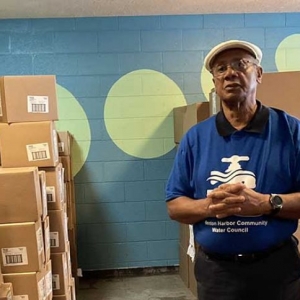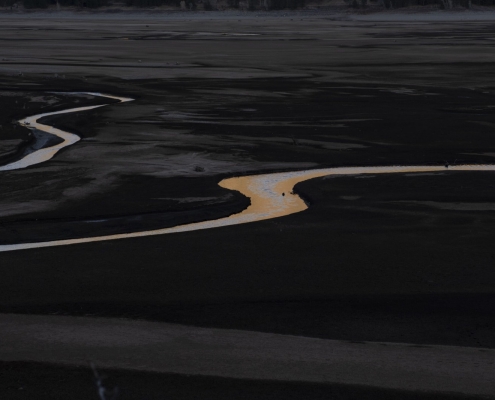 https://www.circleofblue.org/wp-content/uploads/2022/01/COLORADO-RIVER-BASIN-RESERVOIRS-DROUGHT-HV-0001-scaled-1.jpg
1067
1600
Circle Blue
https://www.circleofblue.org/wp-content/uploads/2018/06/Circle-of-Blue-Water-Speaks-600x139.png
Circle Blue2022-01-20 11:28:332022-07-11 13:46:25Historically Excluded from Colorado River policy, tribes want a say in how the dwindling resource is used.
https://www.circleofblue.org/wp-content/uploads/2022/01/COLORADO-RIVER-BASIN-RESERVOIRS-DROUGHT-HV-0001-scaled-1.jpg
1067
1600
Circle Blue
https://www.circleofblue.org/wp-content/uploads/2018/06/Circle-of-Blue-Water-Speaks-600x139.png
Circle Blue2022-01-20 11:28:332022-07-11 13:46:25Historically Excluded from Colorado River policy, tribes want a say in how the dwindling resource is used.A Satellite image from Google Earth shows just how close the Jackpile mine is to the village of Paguate, and how streambeds run through the uranium pits.
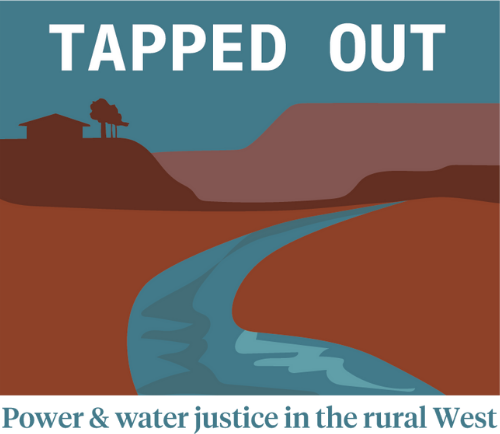
This article was produced by SJV Water, the Center for Collaborative Investigative Journalism (CCIJ). This piece is part of a collaboration that includes the Institute for Nonprofit News (INN), California Health Report, Center for Collaborative Investigative Journalism, Circle of Blue, Colorado Public Radio, Columbia Insight, The Counter, High Country News, New Mexico In Depth and SJV Water. The project was made possible by a grant from the Water Foundation with additional support from INN. For earlier stories in the Tapped Out series, click here.
‘Like a Demon That’s Always Behind Us’, the Jackpile Mine Toxic Legacy Continues
In the village of Paguate as June Lorenzo’s grandmother knew it growing up, orchards and fields of wheat and corn carpeted nearby hillsides. Streams traversed a verdant valley where people hunted and grazed sheep near the small farming community in Laguna Pueblo. This was before a massive mine cratered the nearby land and altered the skyline. Lorenzo has looked for old photos of that landscape, but they’re hard to find. That place exists now only in stories from elders.
For a significant stretch of its 30 years in operation from 1953 to 1982, the Jackpile Mine was one of the world’s largest open-pit uranium mines.
Nearly half of the uranium supply used by the United States for nuclear weapons in the Cold War came from New Mexico thanks to the Grants Mineral Belt, a rich deposit of uranium ore that runs through the northwest corner of New Mexico. The mining started before regulations were in place to protect the surrounding air, water, and public health.
The Pueblo has fought for decades to undo that damage.
These days, only clean-up crews work there, like those Lorenzo sees drilling groundwater monitoring wells as she drives to her job as a judge with the Pueblo of Zia.
“??People grew up not even thinking about the mine because it wasn’t in their lifetime,” Lorenzo said. “They don’t even realize it’s a concern.”
But Lorenzo does. She’s noticed the effects on the tribe’s traditional practices, and water sources and the lingering health problems, like cancer, respiratory illnesses, and kidney diseases, though decades later, the Pueblo still waits for a thorough health analysis.
The U.S. Bureau of Indian Affairs (BIA) and Bureau of Land Management (BLM) had approved a clean-up plan for Jackpile in 1986 and declared work complete in 1995. But now, it’s a Superfund site, joining the list of the nation’s most heavily polluted places and a priority for remediation work to protect public health and the environment.
The U.S. Environmental Protection Agency (EPA) is just now drilling groundwater monitoring wells, 40 years after the mine closed, as the agency assesses the extent of the contamination and how best to address it. Meanwhile, community members live with polluted land, water, and air they worry is slowly killing them.
Jackpile is just one of hundreds of former mines and mill sites. Many fall under the oversight of the federal Office of Legacy Management, which monitors former uranium mines and mills tied to nuclear weapons and energy programs when clean-up work is declared completed.
The agency faces the prospect of some of those sites needing additional work to protect public health. The task ahead means planning for waste that will remain hazardous for hundreds, if not thousands, of years, through a sea of unknowns, while financial limitations mean prioritizing which risks merit the fastest response.
“When you look at the hills, you can see they’re crumbling, and you can see the water that’s re-emerged in the pit,” said Paul Robinson, who has watch-dogged the Jackpile mine for decades as part of his work with the Southwest Research and Information Center (SRIC). “That’s damage left from something the company made a good profit on and the country built its nuclear weapon stockpile on. It made the country great, but it left the community with damaged lands that may or may not be cleaned up.”
‘A plan for failure’
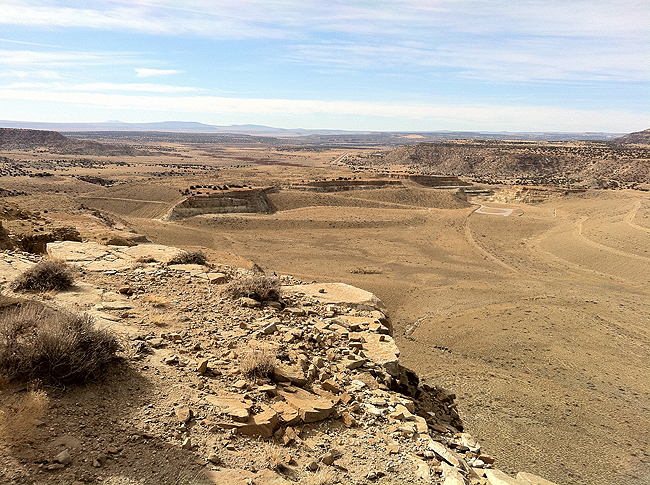
The Jackpile mine after groundcover was planted and sidewalls of the pit were contoured to prevent erosion. Image/National Institute of Environmental Health Sciences.
Three Laguna Pueblo villages edge the mine, and are home to about 1,800 people, who call themselves Kawaika. The Laguna Pueblo sits about 40 miles west of Albuquerque along Interstate-40, its settlements established in the 14th century near a beaver dam-created lake along the Rio San Jose, Lorenzo wrote in a 2006 article published by the Indigenous Environmental Network.
While the mine operated, blasting rattled and cracked walls in their adobe or rock and mortar houses and clouds of uranium-laden dust billowed into the air, drifting over villages where people dried venison and fruit outside. The arrival of an industry that only employed men upended a matrilineal culture in which duties split evenly between husbands and wives, Lorenzo’s research has also found, and triggered persistent problems with alcoholism, drug abuse, and family breakdowns. Families sold off livestock, left fields untended and missed traditional events and ceremonies to accommodate mine work schedules.
None of that has been set right since the mine closed, she said. Neither has the ground itself.
The Anaconda Copper Mining Company (which later merged with Atlantic Richfield, or ARCO) leased 7,868 acres beginning in 1953, and dug three open pits, moving 400 million tons of rock to produce 25 million tons of ore. When mining ceased, the company left literal holes in the ground, one about 625 feet deep, some lying just hundreds of feet from the village. Initial environmental reviews by federal agencies cautioned without cleanup the mine site would present a public health hazard, including increasing radiation-induced cancer deaths.
What should have happened, but didn’t, would have been to bury the leftover uranium-laden ore with clean soil deeply enough to protect nearby water sources from it and other contaminants found with the uranium, like chromium, cobalt, manganese, vanadium, and zinc. That work would have also preserved a Goldilocks-level of soil moisture: If soil is too dry or too wet, it releases radon, which is linked to lung cancer.
“From the plan that was proposed at the time, it didn’t seem like there was much attention to the thickness and the material in the cover,” said Chris Shuey, who co-authored comments criticizing the cleanup plan in 1985. “We said, ‘If you simply backfill the pits, eventually groundwater is going to recover through that material, and it would appear at the surface, and when it appears at the surface, it’s going to be contaminated.’ They said, ‘Well, that’s too expensive, that’s not part of the plan.’ … So I think we thought, at the time, it was a plan for failure.”
Documents from 1985 show researchers tracking uranium and arsenic from the Grants Mineral Belt as far downstream in the Rio Grande as Elephant Butte Reservoir, affecting drinking water and irrigation sources for roughly 200 miles through New Mexico.
In 1986, Atlantic Richfield negotiated a cash settlement with Laguna Pueblo for $45 million to complete the remediation work. The tribe was eager to address an unemployment rate that had soared above 80% following the mine’s closure, and so created the Laguna Construction Company to complete the remediation.
The company employed about 60 people, nearly all tribal members, many of them former mineworkers. They followed the plans and reclamation standards set by the BLM and BIA. The focus: remove risks from mine waste piles that contained traces of uranium by filling pits in the mine higher than the water table to prevent ponds from forming in them, contour waste piles to reduce erosion, and scatter native grass seeds.
Some remediation was better than nothing, at least for a while.
Today the mine is visible for miles, its surfaces shedding dust with tiny particles of uranium, small enough to inhale and damage the lungs.
“We will look back and say, you know, environmentally, that was really not the best plan for reclaiming the land, because what happened was, it rained, and a lot of the cover came undone, and contaminated the water that runs through the Pueblo,” Lorenzo said. “The design—which, you know, they did when there were no standards in existence, right?—was the best they could have, and now, we know that environmentally, it could have been better.”
The EPA-run Superfund program, established by Congress in 1980, was relatively new when the BLM and BIA plan was approved in 1985, Robinson said, and the plan was not evaluated on whether or not it met the EPA’s regulations for contaminants like uranium in the water. Further complicating cleanup is that mines aren’t covered by the Atomic Energy act, which oversees the cleanup of former uranium mill sites.
“This little glitch is a major defect that has resulted in all the uranium mines over the Navajo Nation and around the West being left as orphan mines,” Robinson said. Orphans are abandoned mines for which no financially responsible party can be found. “It’s a very unfortunate gap that’s been unable to be filled, so the Superfund remedy is the only remedy that’s been identified for the Navajo sites, as well as Jackpile.”
Interior Secretary Deb Haaland, who is a member of the Laguna Pueblo, testified in 2019 before Congress when she was a U.S. Representative about the health risks posed by the Jackpile Mine, and the need for more compensation for communities affected by cancer and other illnesses.
“At the Jackpile Mine, these poisons were dumped in an open pit without any lining to protect the ground and the groundwater because that was the standard at the time,” she told her congressional colleagues. “I know it’s difficult for us to comprehend this today. In fact, it’s been 45 years since cleanup of the uranium tailings began, and it’s still not done. That is a responsibility of the federal government.”
As Interior Secretary, she now oversees both the BLM and BIA. Her press office referred questions for this story to the EPA.
Ongoing community concerns prompt Superfund listing
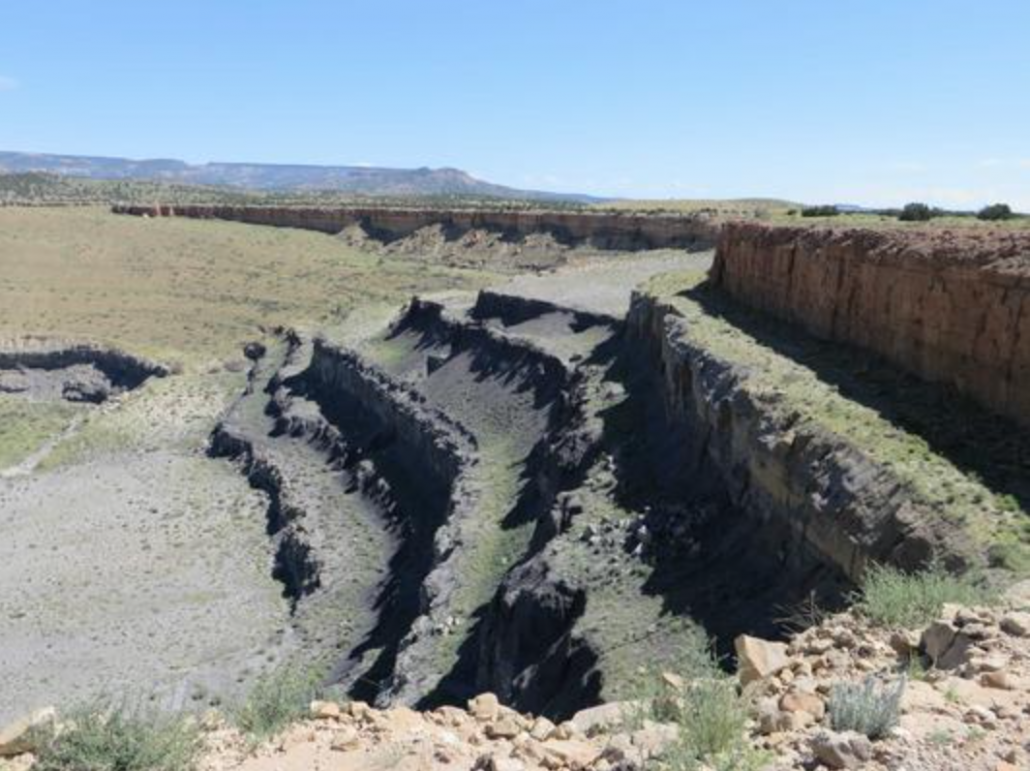
The reclaimed sidewalls of Jackpile pits are now eroding. Image/ U.S. EPA Superfund website.
In time, the Pueblo’s leadership became convinced the problems went beyond the visible damage to the landscape.
“Health issues started to come up decades later,” said Lorenzo, who has also become a community organizer and advocate for human rights. “People didn’t know it would turn up decades after the mine closed. … The Pueblo was just like, you know, this is bigger than we ever thought.”
Lorenzo worked as in-house attorney for Laguna from 2007 to 2010 and began urging the EPA to visit the site at the Pueblo’s behest. When the EPA took a closer look, planes scanned for radiation and found hotspots at the mine, as well as along the Mesita Dam, a marshy, tamarisk-lined area and reservoir that once watered farms.
The EPA’s investigations went on to confirm releases of hazardous substances from the mine area. Uranium, radium, and heavy metals were all poised to affect streams and reservoirs. The EPA concluded mine reclamation still was not complete. Water now visibly pools in the buried open-pit mine.
The water sample credited with landing Jackpile on the Superfund list was taken from the Rio Paguate, an intermittent stream. It measured a concentration of uranium at 500 micrograms per liter, more than 16 times the level considered safe by the U.S. Environmental Protection Agency. Since then, concentrations of uranium from water samples from the Rio Paguate have sometimes approached 800 micrograms per liter.
In essence, decades after mining had ceased and the initial clean-up was completed, runoff from the mine still appears to be contaminating the Rio Paguate much as it had been before any clean-up work was done.
Research in a Environmental Science: Process and Impacts paper found water and sediment samples from the Rio Paguate and Paguate Reservoir’s wetlands, behind Mesita Dam, with traces of uranium from the ore and mine wastes that matched findings from the 1970s. Almost every sample taken of runoff after summer monsoon rainstorms from 2014 to 2016 exceeded the EPA’s maximum contaminant level for uranium.
Kyle Swimmer has lived in Laguna his entire life and works as community liaison for the Pueblo with the University of New Mexico Metal Exposures on Tribal Lands in the Arid Southwest (METALS) Superfund Research Program. He’s convinced the question is not whether uranium has drifted downstream of the mine, but how far it has traveled. Swimmer, trained as an environmental engineer, said the water in the Pueblo should have been continuously monitored and wasn’t.
“Just this year is the first year they started drilling new wells to do water monitoring,” he said. “They let us go for 40 years and this is the first time they’re going to test the waters.”
The EPA, meanwhile, is working to determine the extent of the contamination, the first phase of a Superfund clean-up likely to last decades.
This year, agency staff have repaired fences on the northern, southeastern, and western site boundaries to deter cattle and wild horses from entering the mine. They’ve also reviewed Atlantic Richfield’s groundwater field sampling plan and gamma radiation screening reports, and experimented with techniques for tracking how potentially contaminated groundwater is affecting surface water. Air monitoring stations are also on the site, collecting samples. EPA Region 6 officials failed to respond to repeated requests for an interview for this story.
The longer these contaminants are left, the more problems they can create, Shuey pointed out.
“We have multiple generations exposed, and those generations are passing the effects down,” he said. “So how long is this going to take place? How many generations are yet to go forward with no end in sight, other than continued exposures for vulnerable people tied to the land?”
Atlantic Richfield, meanwhile, is still in court, fighting to avoid the financial burdens that come with the site’s Superfund status. The company’s lawsuit argues the Pueblo accepted liability for the site when it took the $45 million settlement. The company has also sued the federal government as a potentially responsible party because much of the uranium ore was purchased by the federal government.
Citing the litigation around the clean-up, the BLM declined an interview request for this story.
GAO report cautions of a future in which remedies at nuclear waste sites could fail
What’s happening at Jackpile suggests other legacy clean-ups could fall behind, either weathered down over the decades in unanticipated ways or perhaps having always fallen short of standards that would protect public health and the environment. In a 2020 report, the Government Accountability Office pointed to challenges coming for the Department of Energy’s Legacy Management office.
The report said “‘Hey, you know, there’s an anticipation of climate change. What are you doing to look at that?’” said Greg Kuntz, spokesperson with the Legacy Management office.
Already, heavy rain, tornadoes, and hurricanes — all extreme weather events expected to increase as the climate changes — are happening around the country near hazardous waste storage sites. Legacy Management has commissioned several national laboratories to help evaluate that risk and plan for that future, but a final report is not expected until September 2022.
“The biggest limitation is the unknown,” Kuntz said. “We can plan the best that we can, but we have to kind of be flexible in the way of, you know, what is coming with climate change?”
That means doing —and paying for — preparatory work for a future that may never materialize.
After the GAO report, Legacy Management evaluated how well human health and the environment were protected at these sites, identifying “numerous ‘big picture’ ” improvements that could help reduce future risk, Kuntz wrote in an email follow-up.
National laboratories will help prioritize the highest-risk sites, and already the agency is beginning to budget for projects. The GAO report also sparked conversations between Legacy Management and the Office of Environmental Management and the Nuclear Regulatory Commission on how to identify and evaluate new cleanup work, and how to respond when cleanups, like at Jackpile, don’t protect public health and the environment.
Sites under the DOE’s legacy management oversight in New Mexico include Ambrosia Lake, Bluewater, L-Bar Mill, and Shiprock; Homestake, Rio Algom, and Church Rock are expected to join that list. Many are near indigenous populations. When the remediation work at Jackpile is finished and needs only long-term monitoring, the mine could fit the criteria for Legacy Management’s oversight, but if and when it might join that program is unknown.
The contaminated soil and groundwater at these sites will require ongoing surveillance and maintenance.
The GAO report specifically mentioned the L-Bar site, where 2.1 million tons of radioactive mill tailings are permanently stored, as an example of challenges with cleanups. A photo in the report shows the wire mesh-wrapped layer of rock, designed to prevent the spread of those radioactive tailings, crumbling.
Those who pay the price
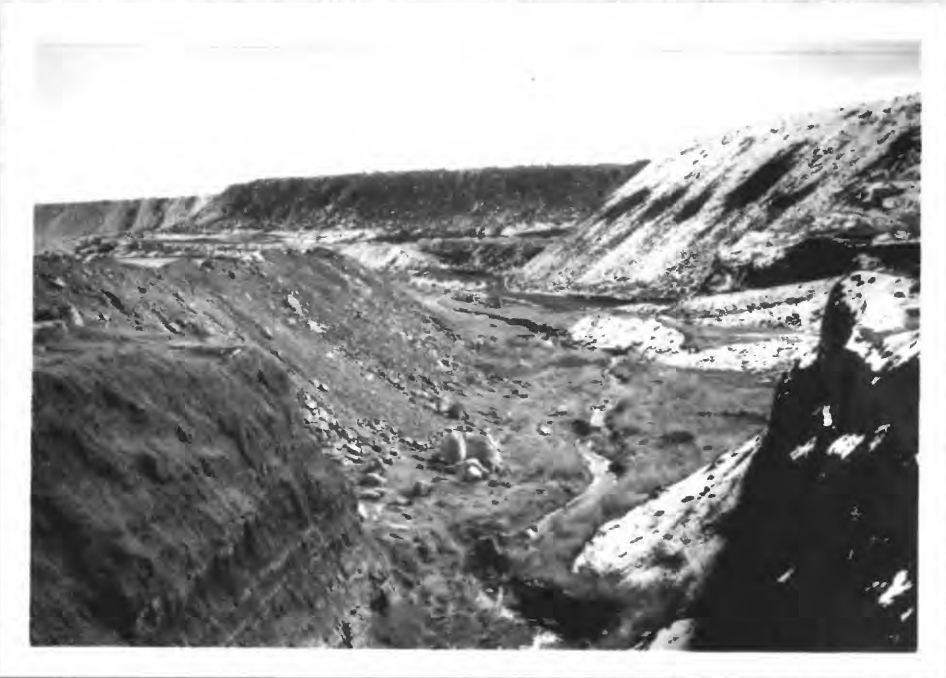
A hazy image from a 1979 U.S. Geological Survey report shows the Rio Paguate running downstream through the Jackpile-Paguate mine area. “Before the mining operations, Rio Paguate flowed in a channel or arroyo that was about 40 feet deep and 100-300 feet wide. Dumping of mine debris has caused some narrowing of the channel. Erosion of the unconsolidated debris adds considerable bedload and suspended sediment to the river. During large flows the river cuts laterally into debris piles,” the report states.
To this day, when people at Paguate sicken, among the first questions asked is, did he work at the mine? Or did a family member come home with dust on his clothes? Despite Laguna villagers’ awareness of the connections between uranium mining activity and cancer deaths among miners and those exposed to dust from blasting, there’s been no comprehensive monitoring of health impacts.
A federal agency that completes public health assessments related to Superfund sites largely concluded that they did not have enough information to know whether health at Laguna had been or would be harmed. Possible exposure included radiation in homes, consuming fish, animals or plants near or downstream of the site, or living in the former mine housing area. Wading or swimming in contaminated water was not expected to pose risk. When UNM METALS asked the community members what they wanted to see researched, a health study topped the list.
“They’re really worried about not only themselves, but their grandkids, their kids,” Swimmer said. “In Laguna, you grew up with these mines being, like, this very terrible thing, and you could never go into it, they were blocked off, with signs that say ‘do not enter,’ so it’s this shadowy place, kind of like a demon that’s always behind us, in the back of our heads. And especially the people living directly next to the mine, they have to look at it every day and wonder if that’s the reason why they’re dying, or that’s why they have these health problems.”
There’s an interest, now, in reviving some traditional practices, like farming. But in Mesita, one of Laguna’s villages, their irrigation supply would come from the reservoir contaminated with uranium. Even where there isn’t evidence of contamination, Swimmer said, there’s fear of it.
“The legacy issues are really serious and I’d really like to see a seriousness about it by EPA and other bodies that are responsible for this,” Lorenzo said. “Because, this community, they really sacrificed a lot, first for nuclear fuel for other people, and there are no nuclear reactors around Laguna. They won’t ever experience nuclear energy — this so-called clean energy. So I think there’s a lot of sacrifice of the people at Laguna and Navajo Nation and other places, and other people benefitted.”

 https://www.circleofblue.org/wp-content/uploads/2022/01/COLORADO-RIVER-BASIN-RESERVOIRS-DROUGHT-HV-0001-scaled-1.jpg
1067
1600
Circle Blue
https://www.circleofblue.org/wp-content/uploads/2018/06/Circle-of-Blue-Water-Speaks-600x139.png
Circle Blue2022-01-20 11:28:332022-07-11 13:46:25Historically Excluded from Colorado River policy, tribes want a say in how the dwindling resource is used.
https://www.circleofblue.org/wp-content/uploads/2022/01/COLORADO-RIVER-BASIN-RESERVOIRS-DROUGHT-HV-0001-scaled-1.jpg
1067
1600
Circle Blue
https://www.circleofblue.org/wp-content/uploads/2018/06/Circle-of-Blue-Water-Speaks-600x139.png
Circle Blue2022-01-20 11:28:332022-07-11 13:46:25Historically Excluded from Colorado River policy, tribes want a say in how the dwindling resource is used.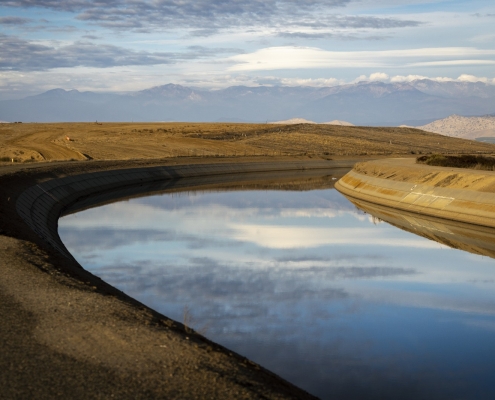
Who Should Pay to Fix California’s Sunken Canals?
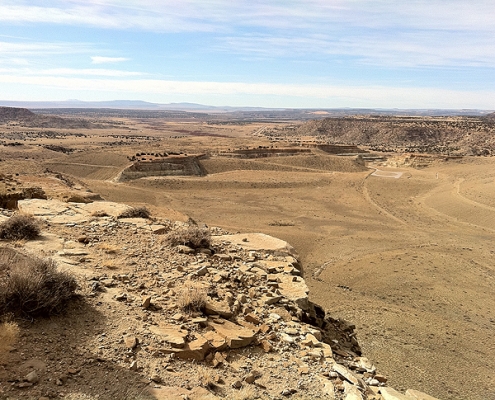 https://www.circleofblue.org/wp-content/uploads/2022/07/Reclaimed-Jackpile.jpg
485
650
Circle Blue
https://www.circleofblue.org/wp-content/uploads/2018/06/Circle-of-Blue-Water-Speaks-600x139.png
Circle Blue2021-12-15 09:36:052022-07-05 10:12:57‘Like a demon that’s always behind us’, the Jackpile Mine toxic legacy continues
https://www.circleofblue.org/wp-content/uploads/2022/07/Reclaimed-Jackpile.jpg
485
650
Circle Blue
https://www.circleofblue.org/wp-content/uploads/2018/06/Circle-of-Blue-Water-Speaks-600x139.png
Circle Blue2021-12-15 09:36:052022-07-05 10:12:57‘Like a demon that’s always behind us’, the Jackpile Mine toxic legacy continues© 2025 Circle of Blue – all rights reserved
Terms of Service | Privacy Policy




